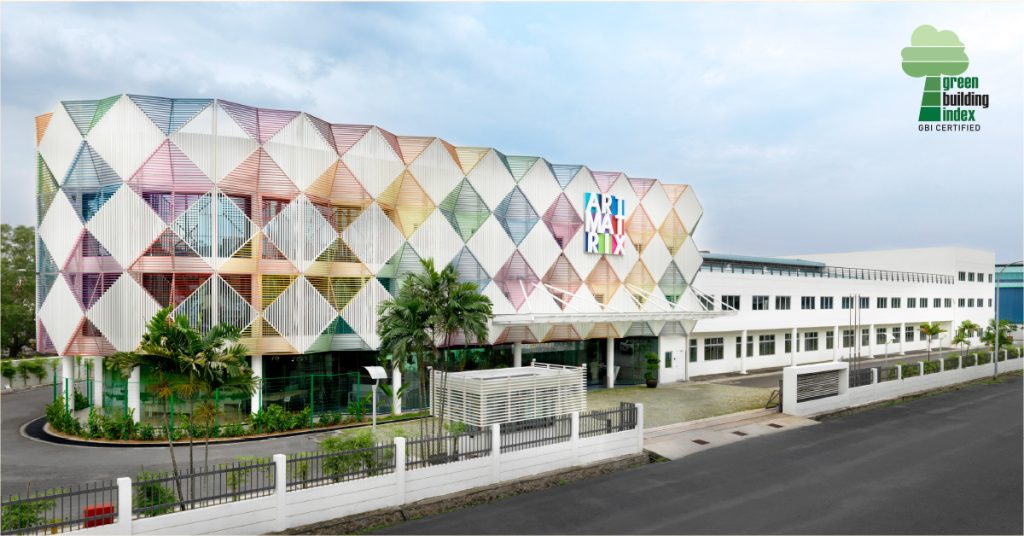
05 Jun How Businesses Can Lead the Charge for a Sustainable World on World Environment Day
World Environment Day, celebrated annually on June 5th, underscores the global commitment to environmental protection and sustainable practices. As businesses increasingly recognize their pivotal role in this moment, the adoption of robust Environmental, Social, and Governance (ESG) strategies has become more crucial than ever. This year, we explore how businesses can spearhead efforts towards a more sustainable world, highlighting the innovative practices and strategic initiatives that not only benefit the environment but also drive economic growth and enhance corporate reputation. Join us as we delve into the ways companies can lead the charge for a greener, more suitable future on World Environment Day 2024.
Embracing ESG: The Blueprint for Sustainable Business Success
Environmental, Social, and Governance (ESG) criteria provide a comprehensive framework for business committed to sustainability and ethical practices. ESG encompasses environmental stewardship, social responsibility, and governance structures, ensuring companies operate in ways that benefit the planet, people, and their own long-term viability. In today’s business landscape, ESG is no longer optional; it is essential. Investors, consumers, and stakeholders are increasingly prioritizing companies with strong ESG credentials, recognizing that sustainable practices lead to resilience, innovation, and profitability. Embracing ESG principles not only fulfills ethical obligations but also drives competitive advantage and fosters trust and loyalty among all stakeholders.
Pioneering Sustainability: Case Studies of Business Leading the ESG Revolution
Examining the success of business with robust ESG practices offers invaluable insights into the benefits and practical applications of sustainability initiatives. Artmatrix exemplifies this commitment through its comprehensive green journey, marked by significant achievement in green product development and certifications such as GECA, MyHijau, SGBP, and GBI for green building. By integrating environmentally friendly materials and processes, Artmatrix not only minimizes its environmental footprint but also sets a benchmark for the industry. Their initiatives include the use of sustainable materials, energy-efficient manufacturing, and waste reduction strategies. Other notable companies have similarly implemented innovative initiatives, ranging from renewable energy adoption to zero-waste manufacturing processes. These case studies demonstrate that strong ESG practices not only contribute to a healthier planet but also drive business success and industry leadership.
Essential Sustainable Practices Every Business Should Embrace

GBI Certified
Adopting sustainable practices is crucial for businesses aiming to reduce their environmental impact and enhance operational efficiency. Artmatrix sets a stellar example with its comprehensive approach to sustainability. The company has significantly increased electricity efficiency by designing their building to have 43% of net leasable area (NLA) with daylighting and 64% of NLA with external views. Artmatrix have also installed high-pressure low-velocity (HPLV) fans to improve thermal comfort energy-efficiently, along with LED lighting and turbine ventilators to reduce heat within the building. Additionally, Artmatrix has implemented rainwater harvesting systems to cut down on water consumption and established a weekly recycling program every Friday. By adopting energy-efficient measures like LED lighting and energy audits, waste reduction strategies such as recycling and composting, and sustainable sourcing and supply chain management, business can follow in Artmatrix’s footsteps. These practices not only promote environmental responsibility but also drive long-term cost savings and operational excellence.
Harnessing Technology for a Greener Future
In the quest for sustainability, technology plays a pivotal role, offering innovative solutions to address environmental challenges. While Artmatrix is in the planning stages for renewable energy adoption, it exemplifies the broader trend of businesses exploring green technologies. From renewable energy sources to advancements in energy management, technology offers a plethora of opportunities to reduce carbon footprints and optimize resource utilization. Artmatrix, for instance, is considering integrating renewable energy sources into its operations, a move that promises to further enhance its sustainability efforts. Additionally, the company explores digital tools and platforms to streamline processes, monitor energy consumption, and minimize waste. By leveraging technology effectively, businesses can not only mitigate environmental impact but also drive efficiency, resilience, and competitiveness in an increasingly sustainable future.
Cultivating a Sustainable Culture: Engaging Employees for Environmental Impact
Building a culture of sustainability within an organization is essential for driving meaningful change and achieving environmental goals. Artmatrix sets a prime example by prioritizing employee engagement and corporate social responsibility (CSR) initiatives. Through its CSR program, the company ensures an excellence working environment for all employees while actively contributing to the community. Artmatrix encourages employees to volunteer and actively participate in green initiatives, fostering a sense of ownership and responsibility towards sustainability. By implementing programs and incentives that recognize and reward employee contributions to environmental stewardship, businesses can instill a culture of sustainability that permeates every aspect of their operations. Empowering employees to take ownership of sustainability initiatives not only enhances environmental impact but also strengthen corporate culture, morale, and overall organizational performance.
Sustainable Practices: Beyond Environmental Responsibility to Business Advantage
Exploring the business benefits of sustainability goes far beyond mere environmental responsibility; it’s about leveraging strategic advantages for long-term success. By adopting sustainable practices, businesses can realize significant economic advantages, including cost savings and increased operational efficiency. Artmatrix, for instance, has experienced tangible benefits from its sustainability initiatives, such as reduced energy consumption leading to lower utility costs and enhanced efficiency in resource utilization. Moreover, sustainability efforts have profound impact on brand reputation and customer loyalty. Artmatrix’s commitment to sustainability not only resonates with environmentally conscious consumers but also fosters trust and loyalty among stakeholders. By aligning business objectives with environmental stewardship, companies can position themselves as leaders in their industries and attract a growing base of environmentally aware consumers.
Moving beyond regulatory compliance, voluntary certifications and standards play a crucial role in demonstrating a company’s commitment to sustainability. While complying with environmental regulations is essential, going beyond compliance sets businesses apart as true environmental leaders. Artmatrix, for instance, has pursued certifications such as ISO14001 and green certification to validate its sustainability efforts and differentiate itself in the market. These voluntary certifications not only signal a commitment to environmental responsibility but also provide a competitive edge by enhancing credibility and trust among customers and partners. By embracing voluntary standards and certifications, businesses can showcase their dedication to sustainability and unlock new opportunities for growth and differentiation in an increasingly eco-conscious marketplace.
Driving Sustainable Impact: The Power of Community and CSR
Community involvement and corporate social responsibility (CSR) are integral to the success of sustainability efforts. Engaging with local communities and fostering partnerships amplify the impact of green initiatives and create a ripple effect of positive change. Artmatrix exemplifies this approach through its robust CSR program, which ensures a supportive working environment, encourages employee volunteerism, and commits to uplifting the community. Successful CSR projects not only contribute to environmental goals but also build stronger community ties and enhance corporate reputation. By actively participating in community-based sustainability efforts, businesses can drive broader societal impact while aligning with their values and mission.
Tracking and Reporting Sustainability: Metrics that Matter
Effectively measuring and reporting sustainability efforts is crucial for transparency and continuous improvement. Key metrics and KPIs such as carbon footprint reduction, energy and water usage, waste management, and employee engagement in green initiatives provide a clear picture of performance. Artmatrix leverages these metrics to monitor its sustainability journey and ensure accountability. Best practices for sustainability reporting include regular updates, comprehensive data collection, and transparent communication with stakeholders. By adopting these practices, businesses can showcase their progress, build trust, and inspire further action among employees, customers, and partners.
The Future of Sustainability: Trends and Innovations
The landscape of business sustainability is continuously evolving, driven by emerging trends and innovations. Future trends point towards increased adoption of renewable energy, circular economy models, and advanced materials that minimize environmental impact. Artmatrix is at the forefront of exploring these innovations, planning to integrate renewable energy solutions and its green product offerings. Predictions for the future include a stronger emphasis on climate resilience, greater regulatory scrutiny, and a shift towards sustainability as a core business strategy. By staying ahead of these trends, businesses can not only contribute to a sustainable future but also gain a competitive edge in an increasingly eco-conscious market.
Leading the Way to a Sustainable Future: A Call to Action for Businesses
In conclusion, the role of business leadership in driving sustainability cannot be overstated. Companies like Artmatrix demonstrate how robust ESG practices, community engagement, and innovative sustainability initiatives can lead to significant economic, social, and environmental benefits. As we look towards the future, it’s clear that embracing sustainability is not just an ethical imperative but a strategic advantage. We urge businesses to take concrete steps towards a greener future by integrating sustainable practices into their core operations, engaging with communities, and pursuing voluntary certifications that go beyond regulatory compliance. By leading the charge, businesses can pave the way for a more sustainable, prosperous, and resilient world. Now is the time to act and make a lasting impact.

Sorry, the comment form is closed at this time.